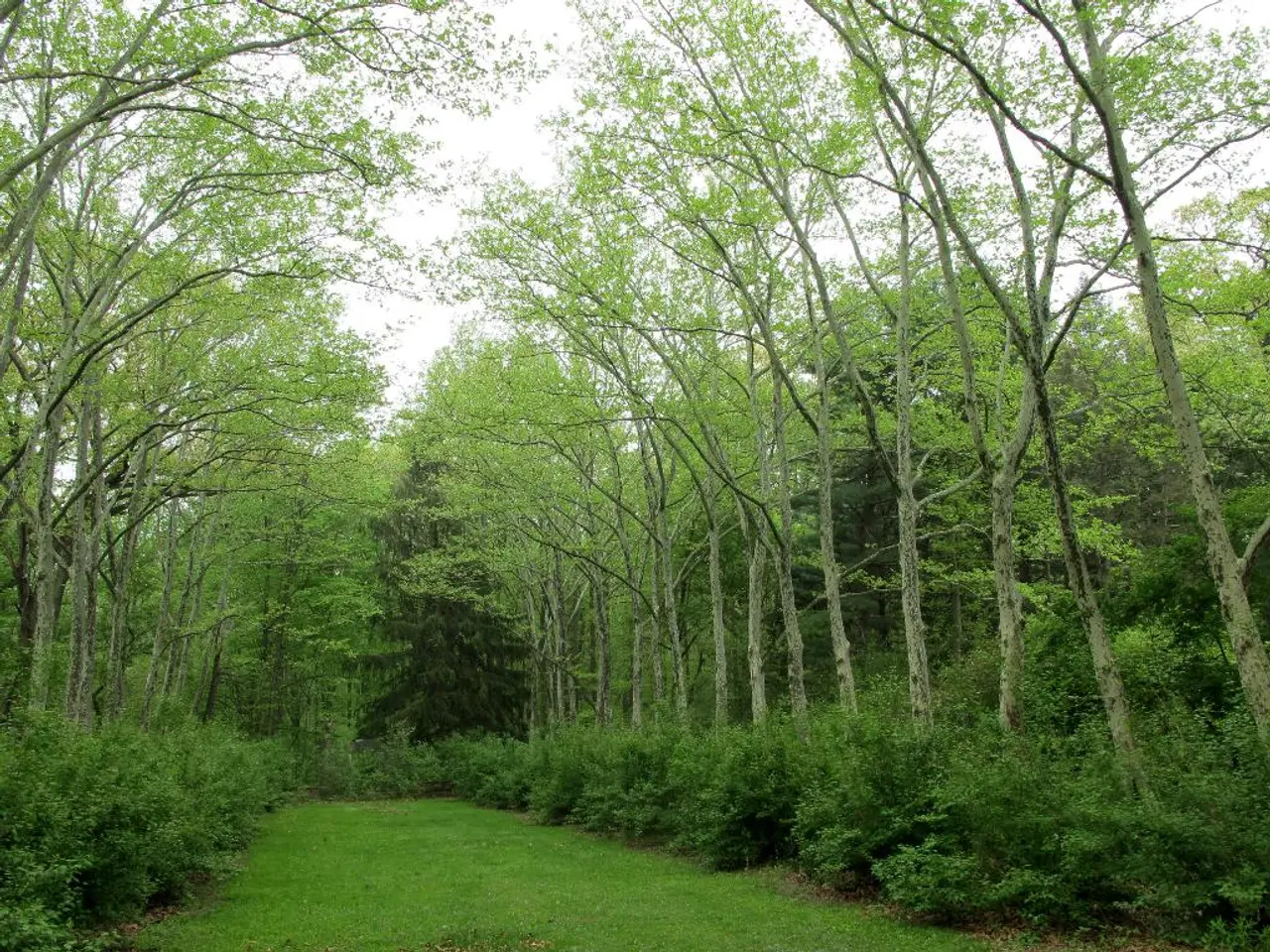New gardening fads for 2025: a peek into the upcoming green landscape trends
In the coming years, garden design is set to undergo a significant transformation, with a strong emphasis on sustainability, wildlife-friendliness, and well-being. This shift reflects a growing appreciation for natural ecosystems and the role gardens can play in enhancing human enjoyment and environmental responsibility.
One of the key trends is the adoption of wildlife-friendly planting. Gardens are moving towards using native species that provide abundant, layered textures, offering forage and shelter for insects, birds, and mammals. This less manicured approach includes elements like leaf litter, log piles, and hibernacula, which create vital microhabitats for wildlife. Pollinator-friendly plants such as coneflowers, bee balm, and black-eyed Susans are gaining popularity due to their ability to support local biodiversity.
Sustainable landscaping practices are another crucial aspect of 2025 garden design. Beyond drought-tolerant plants, sustainable gardening includes minimising pesticide use, incorporating natural animal habitats, and features like rainwater collection systems. Smart irrigation systems using sensors and weather data are becoming widely adopted to conserve water while maintaining plant health.
Environmentally responsible lighting is another trend, with gardens incorporating low-wattage LED lighting that reduces energy use and avoids disrupting nocturnal wildlife, promoting a natural night environment and enhancing activities like stargazing without artificial glare.
The use of materials and design choices is also evolving. The use of locally sourced stone, reclaimed wood, and permeable pavers is increasing. These materials reduce runoff, lower environmental impact, and contribute to the garden's longevity, supporting sustainability goals.
Well-being and outdoor living are also key considerations in 2025 garden design. Gardens are being designed not only for ecological benefit but also for human enjoyment and wellness. This includes creating outdoor living rooms that integrate nature into daily life, encouraging relaxation and connection with the environment.
Technology is playing a significant role in garden design, with AI-assisted garden planning helping optimise plant selection and landscape design based on soil, water, and climate data, enhancing sustainability and functionality.
Biophilic spaces are gaining popularity, with gardens being viewed as extensions of living spaces for daily nature connection. Gravel, sand, or waste gardening is gaining traction as a sustainable approach to creating resilient landscapes. Informal borders that mimic untamed landscapes are expected to be seen in gardens.
Maximalist planting designs are being favoured, focusing on ecological roles and interactions instead of aesthetic appeal. Gardens designed for well-being are incorporating sensory elements such as fragrant plants and soothing water features. Naturalistic planting schemes featuring diverse colours, textures, and heights are becoming popular.
Using materials like gravel creates a free-draining environment that compels roots to grow deeper in search of moisture and nutrients. The principles of sustainable garden design, focusing on well-being and ecological health, will continue shaping how we interact with our outdoor spaces in the coming years.
In urban gardens, there is a growing emphasis on multi-functionality to maximise space utility. Repurposing materials for sustainability is increasingly common in garden design. The gardening world is focusing on adopting wilder, less structured aesthetic designs.
In conclusion, the gardens of 2025 are set to be more natural, supportive of ecosystems, and conducive to human well-being. They will integrate smart water and lighting solutions, prioritise ecological health and biodiversity, and focus on supporting mental and physical well-being through harmonious interaction with nature.
- In the coming years, garden design is expected to prioritize native plants for wildlife-friendly planting, providing textures and habitats for insects, birds, and mammals.
- Sustainable gardening practices, such as minimizing pesticide use and incorporating natural animal habitats, will be crucial in the designs of 2025 gardens.
- Innovative features like rainwater collection systems and smart irrigation systems will be widely adopted to conserve water while maintaining plant health and supporting sustainability goals.
- low-wattage LED lighting will be used in gardens to reduce energy consumption, promote natural night environments, and minimize disruptions to nocturnal wildlife.
- In line with the focus on ecological health, gardening materials like locally sourced stone, reclaimed wood, and permeable pavers will be increasingly used to reduce runoff and lower environmental impact.
- Maximalist planting designs, favoring ecological roles and interactions over aesthetic appeal, will become popular, along with sensory elements like fragrant plants and soothing water features, creating biophilic spaces that enhance mental and physical well-being.




